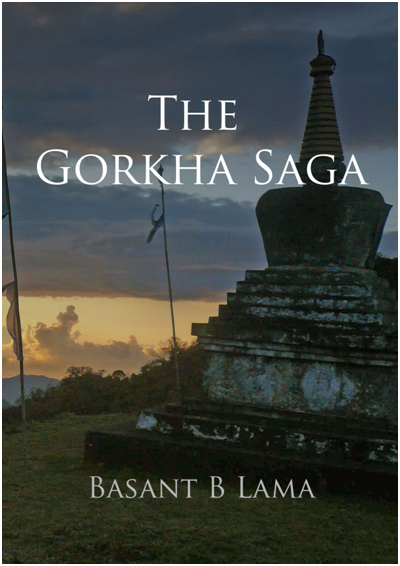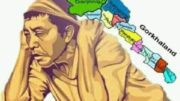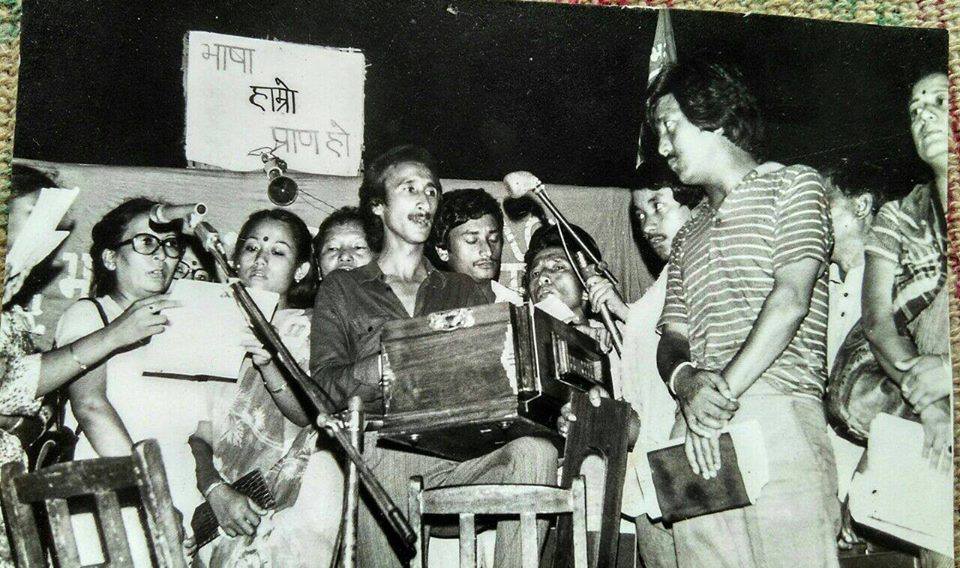Ever since the TMC came to power in 2011, it has launched a relentless campaign to make political inroads in the hills, dividing people into its many sub-ethnic groups by setting up ‘Development Boards’, weaning away discontented GJMM cadre and splitting the hills into two Districts, Darjeeling and Kalimpong. But the attempt to take control of the hill municipalities failed. As punishment, a furious Mamta Bannerjee declared that the Bengali language would be made a compulsory subject in all hill schools, an issue already resolved in 1961 when the three hill subdivisions of Darjeeling, Kalimpong and Kurseong were exempted from the purview of the West Bengal Official Languages Bill (Act XXIV) of 1961 (Gazette Notification date 11th November 1961) whereby Bengali became the ‘only official Language’ for all administrative purposes in the State. The Chief Minister back-tracked a few days later.
People took to the streets in public protests anyway. After all the right to freedom of speech and expression is enshrined in the Constitution subject to the State imposing ‘reasonable restrictions on such rights’.
The police were ordered to break up the demonstrations, with batons and bullets if necessary. The public fought back with bricks and stones. Three protestors were killed. The army was called out to ‘restore law and order’. The full force of a state government machinery swung into action to suppress any form of dissent. Local TV channels were pushed off the air. Internet services were blacked out. The streets were swarming with baton-wielding, gun toting ‘security personnel’. All of the shops pulled down their shutters. All vehicles went off the road. Darjeeling braced itself for a long shut down.
National TV channels and the print media highlighted the plight of tourists stranded in Darjeeling. No place to stay, no food, no water, and no transport to get out of the troubled areas. Yes, they were inconvenienced. However, there wasn’t a single word on the reasons as to why Darjeeling was so angry. What was at the root of all the troubles? Nobody wants to know. Nobody cares. Bengal’s vaunted ‘intelligentsia’ just kept mum. Why bother? Darjeeling is an integral part of Bengal, how dare Bengal’s authority be challenged?
With the certain knowledge that Darjeeling will always be treated like a colony and her people always be treated as second-class citizens, the demand for a separate state of Gorkhaland has revived. The issue is much more complicated than it appears to be on the surface.
For the people, it’s a fight for their identity – as bonafide Indian citizen different from the Bengali of the plains.
For Bengal, it is a matter of territory and they will scream to the high heavens ‘No more Partition of Bengal”.
The first was in 1905 when Bengal was splintered into Bihar, Orissa, Bengal and Assam (which was given all the Muslim areas of East Bengal). Bengal’s sons rose up in defiance and the many who were caught and hanged were labelled ‘terrorists’ by the British authorities: today they are worshipped as heroes by Bengal – rightfully so.
The second was in 1947 when Bengali fought Bengali, and the land was ultimately divided into a Hindu West Bengal that stayed with India, and a Muslim East Bengal that went with Pakistan. Such partitions of a fertile land with a rich history, tradition and culture and a language to be proud of, all in a short span of just fifty years, has hurt Bengali pride. We understand their anguish and pain. But why take out the hurt and anger and frustration on Darjeeling?
After all, Darjeeling was never a part of Bengal.
Don’t believe it? Read on.
The Darjeeling hills had been acquired by the British from Sikkim (not from Bengal) through a Deed of Grant signed 1st February 1835 by the Sikkim Rajah. And so Darjeeling became a hill station for Europeans to escape the blistering heat of the plains. Over the years Darjeeling grew into a bustling summer resort for the British in India.
And then in 1833, the Honorable East India Company lost its highly profitable monopoly on the China Tea Trade. So it decided to grow its own tea. Darjeeling was found to be most conducive to grow the Chinese tea plant. The hills were denuded of its dense tropical rain forests to make way for tea plantations. But there wasn’t enough local labour to work the new upcoming plantations so the British enticed people from the neighbouring hills offering free housing, subsidized rations and cash wages paid every week.
And that is how the Nepali population of the Darjeeling, Kalimpong and Dooars came into being. They’ve been around for almost 175 years: six generations.
Within a short span of 50 years, the quality tea of Darjeeling and the quantity tea of Assam completely dried up tea imports from China. The Chinese economy collapsed, there was a famine, people from all over the countryside rose up in rebellion, the last of the Manchu emperors was deposed in 1911, and China degenerated into chaos and civil war with local warlords fighting each other, a struggle that ended with the Communists gaining complete control of China in 1949.
Meanwhile, English tea plantation owners made fortunes and Darjeeling prospered. Roads were improved, train services began, clean water supply services were introduced, Asia’s first hydel station was built at Sidrabong and besides Calcutta, Darjeeling was the only urban area in Bengal with electricity. Darjeeling soon acquired the reputation of being ‘The Queen of the Hill Stations’.
In 1874, the British enacted the Laws (Local) Extent Act of 1874 or Scheduled Districts Act of 1874 – also known as ‘Listed Districts’ because they were listed in the Schedule. The Scheduled Districts Act specified five such areas in the Bengal Province with much more in other parts of India.
Darjeeling was one such area– categorized a ‘Scheduled or Listed District’.
Darjeeling was then designated a Backward Tract defined as an area inhabited by tribals because they were distinctly different from the plains people of Bengal. The Government of India Act of 1919 brought all such Backward Tracts under its ambit and no Central or Provincial Act could apply to it unless specifically so extended. Reclassified as Excluded Areas all such Backward Tracts came under the direct rule of the Governor of each Province, whereas Partially Excluded Areas were placed under the responsibility of a Minister specifically in charge of such Excluded or Partially Excluded Areas. Under the Government of India Act of 1935, Darjeeling became a Partially Excluded Area where the laws of British India did not apply.
Sikkim’s claim for the return of Darjeeling made in 1948 was ignored by Delhi.
Based on the Dar Commission Report of 1948 and the 1950 White Paper on the Indian States, the newly independent Government of India decided to reorganize the boundary lines of all of its territories. On 26th January 1950, the Constitution of India came into effect and the whole of the country was temporarily re-organized into Part ‘A’, Part ‘B’ and Part ‘C’ states.
West Bengal became a Part “A” state whose areas under Article 1 of the Constitution of India were defined as “The territories, which immediately before the commencement of this Constitution were either comprised in the Province of West Bengal or were being administered as if they formed a part of that province”. Darjeeling therefore was tagged with Bengal simply because it had been administered ‘as if’ it formed a part of that province.
Not ‘as’ but ‘as if’ – big difference sir.
Going on a honeymoon‘as’ husband and wife is not quite the same as going on a honeymoon ‘as if’ husband and wife – ‘very big’ difference sir.
………….ooo00000ooo………….
Darjeeling was NOT THE ONLY such ‘undefined area’.
Between 15th August 1947 and 7th December 1953, there were 11 such undefined areas in various parts of India, whose political status under the new Constitution was still subject to interpretation: literally a ‘no-man’s land’ with a politically undefined status.
Bihar had four such areas:
Bombay had two such areas:
Orissa had one such area:
Uttar Pradesh had three such areas:
West Bengal had one such area: Darjeeling District
The Government of India realized that this de-facto as if’ status of any territory in India did not enjoy the sanctity of law – something de jure had to be done. To rectify these ‘errors of omission’ the Government of India on 7th December 1953 enacted The Absorbed Areas (Laws) Act, 1954 – (Act XX of 1954) whereby all 11 such territories were formally ‘absorbed’ into the Union of India. It was basically a mopping up exercise. The Act came into effect from the date of the enactment.
Meaning Darjeeling was absorbed into Bengal only in 1954.
The Oxford English Dictionary defines ‘absorb’ to mean ‘incorporate, assimilate, take in’. If Darjeeling had to be absorbed, incorporated, assimilated, taken in into the state of West Bengal
It obviously means that
BEFORE 1954
DARJEELING HAD NOT BEEN
INCORPORATED, ASSIMILATED, TAKEN IN
INTO THE STATE OF WEST BENGAL.
Then again the States Reorganization Committee (SRC) in 1955 recommended the formation on a ‘linguistic basis’ of 16 states and 3 Centrally Administered Areas as a means to an end and not necessarily as an end in itself.
With some modifications, Parliament in 1956 reorganized India into 14 states and 6 Union Territories.
There were anomalies, as was bound to happen considering the sheer size and diversity of the sub-continent. The 1961 Census of India Mother Tongue Figures found an astounding 1652 distinctly different languages in India each spoken by ‘more than 100,000 people’ of which 33 had been identified as early as 1816 as the ‘major languages’ of India each quite unintelligible to the other (the Nepali language was included in this 1816 list of 33). So setting up just 14 states on a linguistic basis was bound to create some dissatisfaction, if not in 1956, then certainly at some future date. Ever since then there have been dozens of demands for a ‘separate state’ in as many different places – some so far conceded (10 more new states have been created after the 1956 SRC) and some not (another 14, including Gorkhaland, are still on the waiting list) – none of them labelled ‘secessionist’ and no, not all of the contentious issues have been resolved. As of the last count in 2014 there are 28 states in India.
………….ooo00000ooo………….
The demand for a self-governing status for Darjeeling first began more than a century ago in 1907 and since then, over the years, time and again the hills have petitioned, pleaded, protested, shouted, agitated and screamed for a ‘special separate status’. Anywhere but Bengal: Every noise Darjeeling made always fell on deaf ears, every petition was thrown into the wastebasket, every plea ignored, every prayer unanswered.
With impeccable logic, Darjeeling has argued that they never were, and have no desire whatsoever to be, a part of the state of West Bengal. Like chalk and cheese, they have nothing in common: they are poles apart, geographically, historically, ethnically, socially, culturally, linguistically (even the script is different). Darjeeling accuses Bengal of treating it like a colony (true); to be used exactly for the same purposes the British established it for – as a summer resort (true): cheap enough for the average Bengali of the plains to afford a short holiday in the cool hills.
In the end, Darjeeling simply rebelled.
Arguments brought forward by proponents and opponents of Gorkhaland sound frighteningly similar to the description of the elephant by blind men – each absolutely correct from his own viewpoint yet ‘blind’ to the overall picture, which is quite different actually – it’s a much larger picture, so to speak.
For fifty years communist Russia said to the Polish people: why do you want to be a Pole when you can be a factory worker? In like manner, Bengal tells Darjeeling why do you want to be a Gorkha when you can be a tea plucker or a tourist guide? Why do you want Gorkhaland when you can have your own development Board’? [Lepcha, Tamang, Bhutia, Sherpa whatever] Why do you want Gorkhaland when you can have your own district [Kalimpong, Darjeeling, Kurseong, Mirik whatever]?
But Darjeeling does not want to be a part of Bengal – as a
‘Development Board’ or even a ‘District’. Darjeeling’s people want to have their own state to assert the National Indian identity of 12.5 million Gorkhas spread all across India. They want their ‘Indian Identity’. Why can’t Bengal and the rest of the country understand this?
It would do well here to quote the Report on the Proceedings of the Parliamentary Committee on Home Affairs, 7th February 2008: As far as the Gorkhas of the Darjeeling hill area is concerned (Translation of Hindi text)… their sole stand is that ‘we are Indians, call us Indian’…we were under the initial impression that some separatists will come forward to demand Gorkhaland… but in fact, their demand is for an identity as an Indian which they feel can be achieved only by having a State of their own ………they say‘we are Indians, accept us as Indians’.
All that the Indian Gorkhas are asking for is to be recognized as bonafide citizens of the land of their birth, India, with all the rights and duties this entails, and to be treated with respect and dignity – a status for which, for generations upon generations, both before and after independence, they have shed so much blood, sweat and tears and continue to do so even today.
Historically and geographically, Darjeeling has always been part of the Indian Nation – but the people of Darjeeling never were, and have no desire ever to be, a part of the State of Bengal. It’s that simple. This sentiment was articulated by Darjeeling as early as 1907!!!
The slogan of ‘We wants Gorkhaland’ was renewed in 2007. The Gorkha League’s Madan Tamang very loudly opposed accepting any alternative – he demanded the movement run its full course to its logical conclusion – achieving a separate state of ‘Gorkhaland’. In May 2010 he was murdered for his views – in broad daylight. His murderers have never been found or even arrested.
With Madan out of the way, a new Gorkhaland Territorial Authority, GTA was established as an ‘interim set-up’ originally intended to last for just two years, but now appears to run its full course of not just five years, but as long as it can last. Just like how Subhash Ghising’s tenure of Caretaker of the DGHC was meant to last just 6 months. He got four extensions. We don’t know how many extensions there will be for the GTA ‘interim set-up’.
Ten years down the line after the Indian Idol Affair, Gorkha and’ is nowhere in sight.
The credibility of the GJMM was completely dented when it flatly refused to dismantle the GTA in protest against the Centre to create a Gorkhaland when it could create a new state of Telangana in 2014.This fresh movement was again brutally crushed by ‘security forces’ rushed into the area ‘to maintain law and order’ in a ‘politically sensitive area’. Ever since then Darjeeling is in a perpetual state of siege – blanketed with ‘security forces’. It’s combat-battle-dress automatic rifle gun-toting boot-crunching jawans patrolling the streets in high profile full public view every day.
The message to locals is crystal clear: don’t mess with us – look, we have the guns.
An overwhelming military presence kept the whole Soviet Bloc Europe on a tight leash for more than 70 years (1918 to 1990), but in the end even mighty Russia had to let go of Estonia, Latvia, Lithuania, East Germany, Belarus, Poland, Czechoslovakia, Hungary, Romania, Bulgaria, Ukraine, Georgia, Azerbaijan, Armenia, Kazakhstan, Turkmenistan, Uzbekistan, Kyrgyzstan and Tajikistan. These are all full-fledged countries today. The overwhelmingly superior military power of the United States kept the Vietcong at bay for a decade and a half – even so in the end, they were thrown out. Then again the overwhelmingly superior military power of the USSR could not subdue Afghanistan – the Russians had to leave ingloriously.
Which only proves one thing.
Brute force is simply not tenable – not in the long run.
Does Bengal, like Russia and the USA, really believe it can hold on to the territory by sheer military force?
‘Terrorism’ by the state is not a solution; it only puts off the date of reckoning for some other day. Sooner or later the problem will have to be resolved.
A solution to the Darjeeling issue will be found, maybe not in our lifetimes – but it will be found.
And in all likelihood, it will not be to the satisfaction of the Gorkha of Darjeeling or the Bhadralok of Bengal.
And then the cycle of history will repeat itself.
“There is no present or future – only the past, happening over and over again – now.”
Eugene O’Neill – A Moon for the Misbegotten
Writes: Basant B Lama*
………………………
*Basant Lama, is the Author of the book – The Story of Darjeeling. The major portion of this article is actually taken from Mr Basant Lama’s yet to be published book – “The Gorkha Saga” consisting of 8 volumes.






Could you provide an article on the means to procure the book on its release? Also, when is the approximate date for the release?